
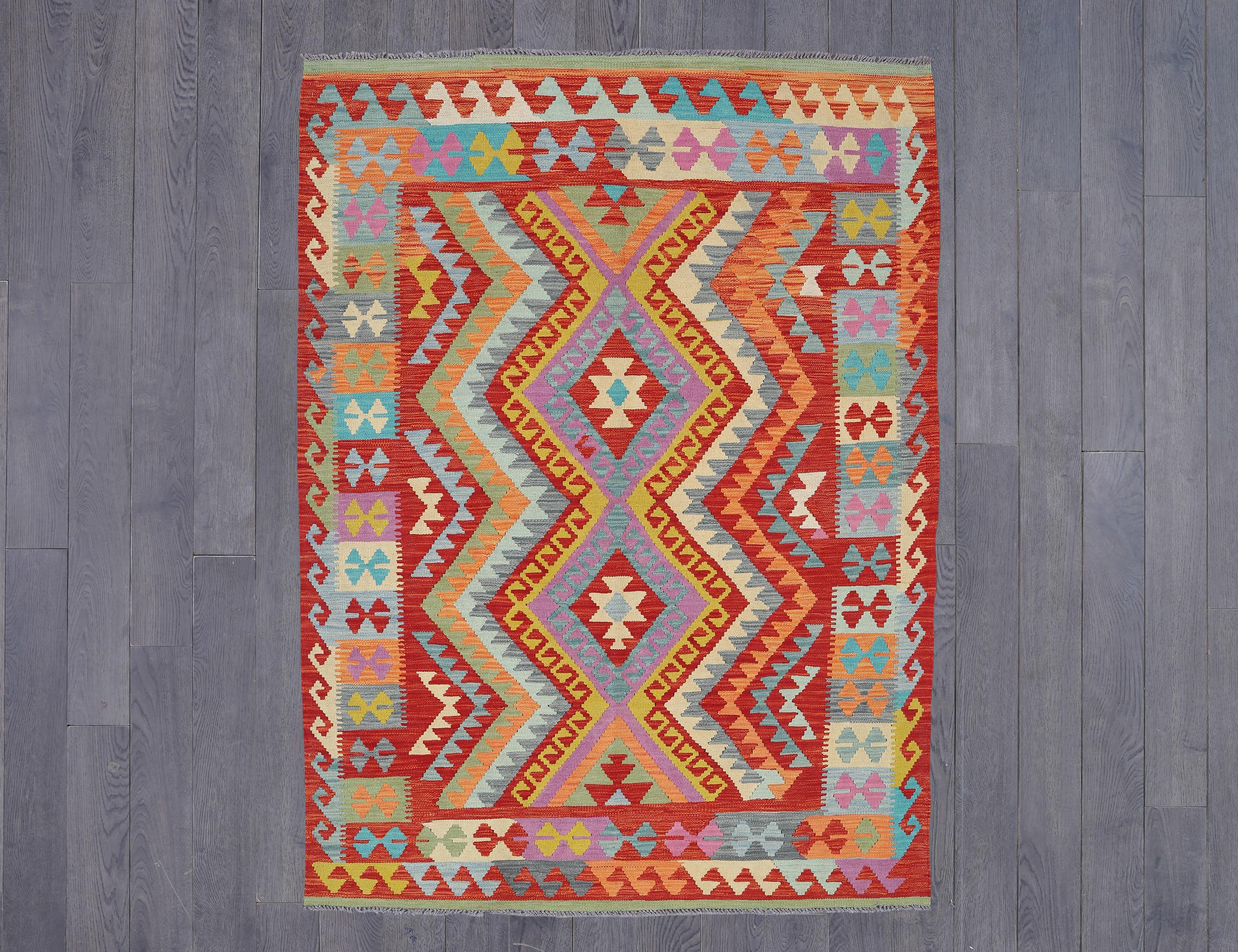
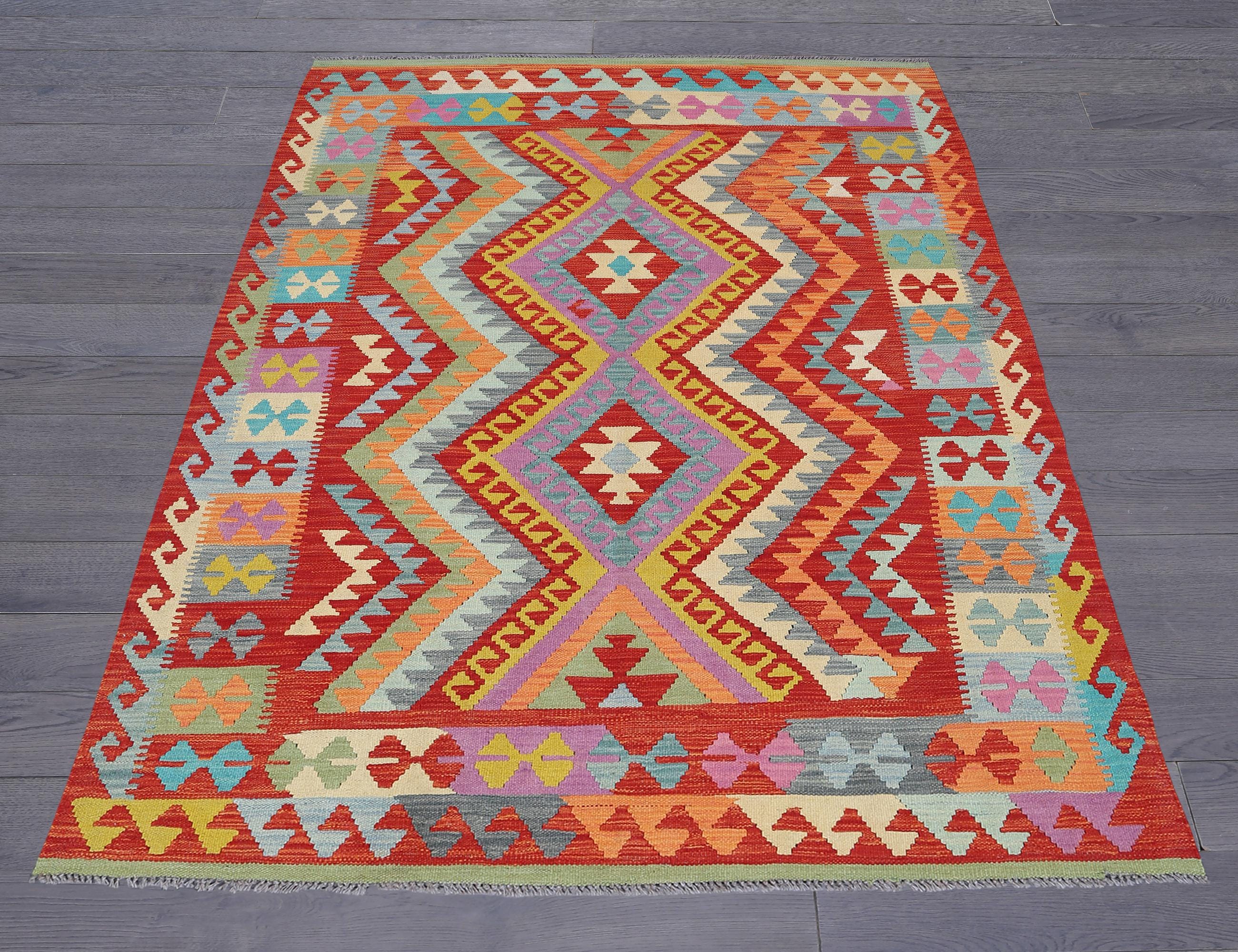
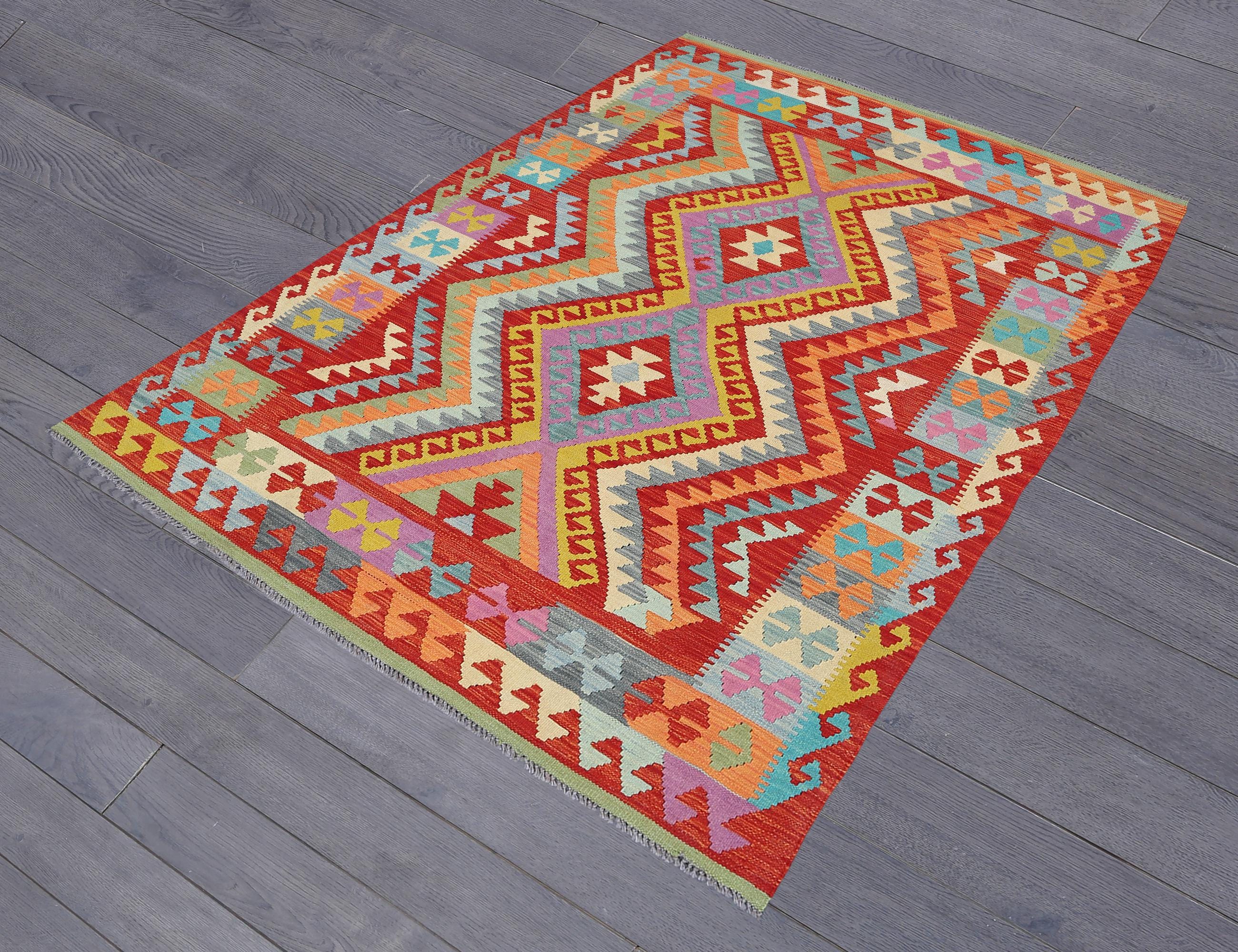
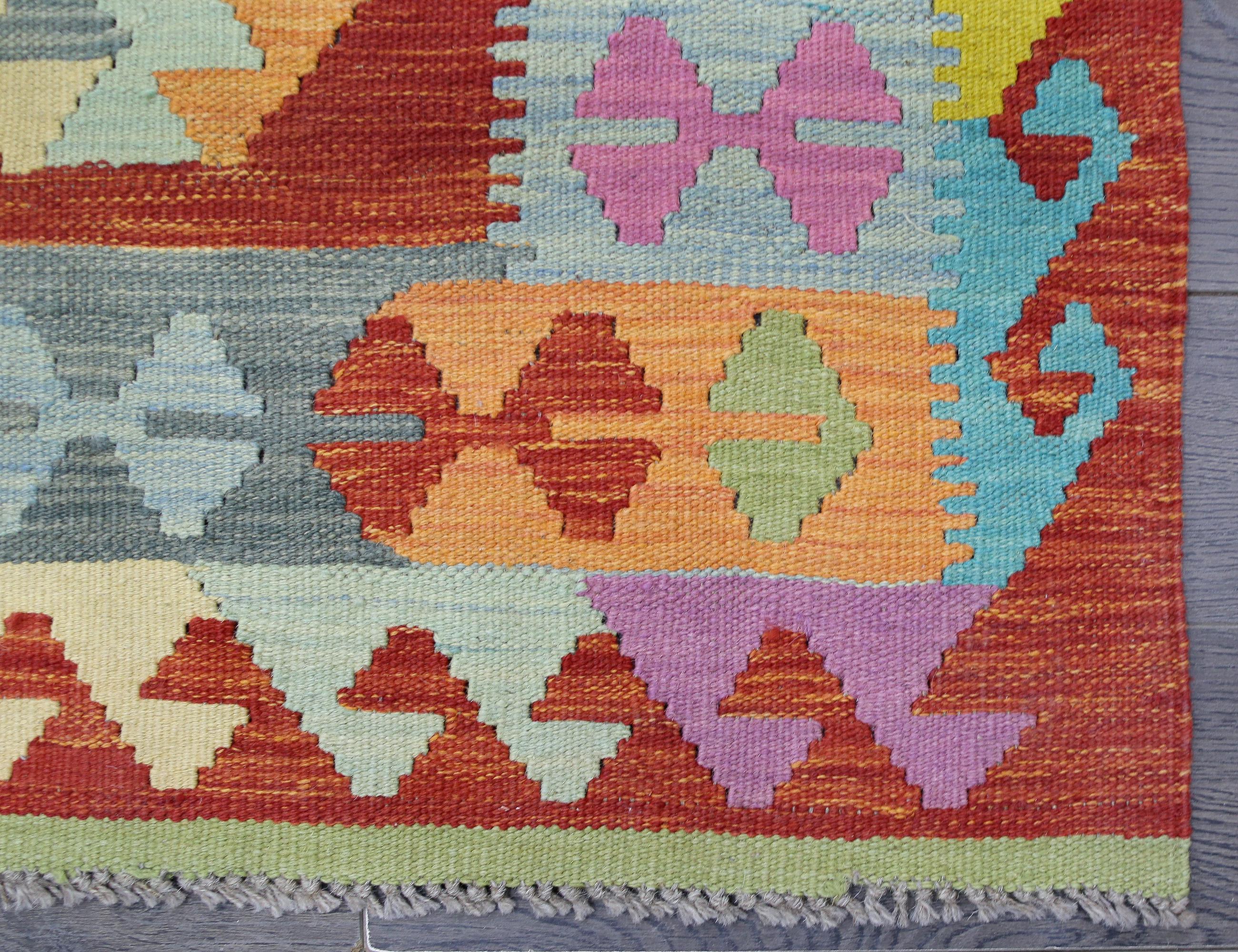
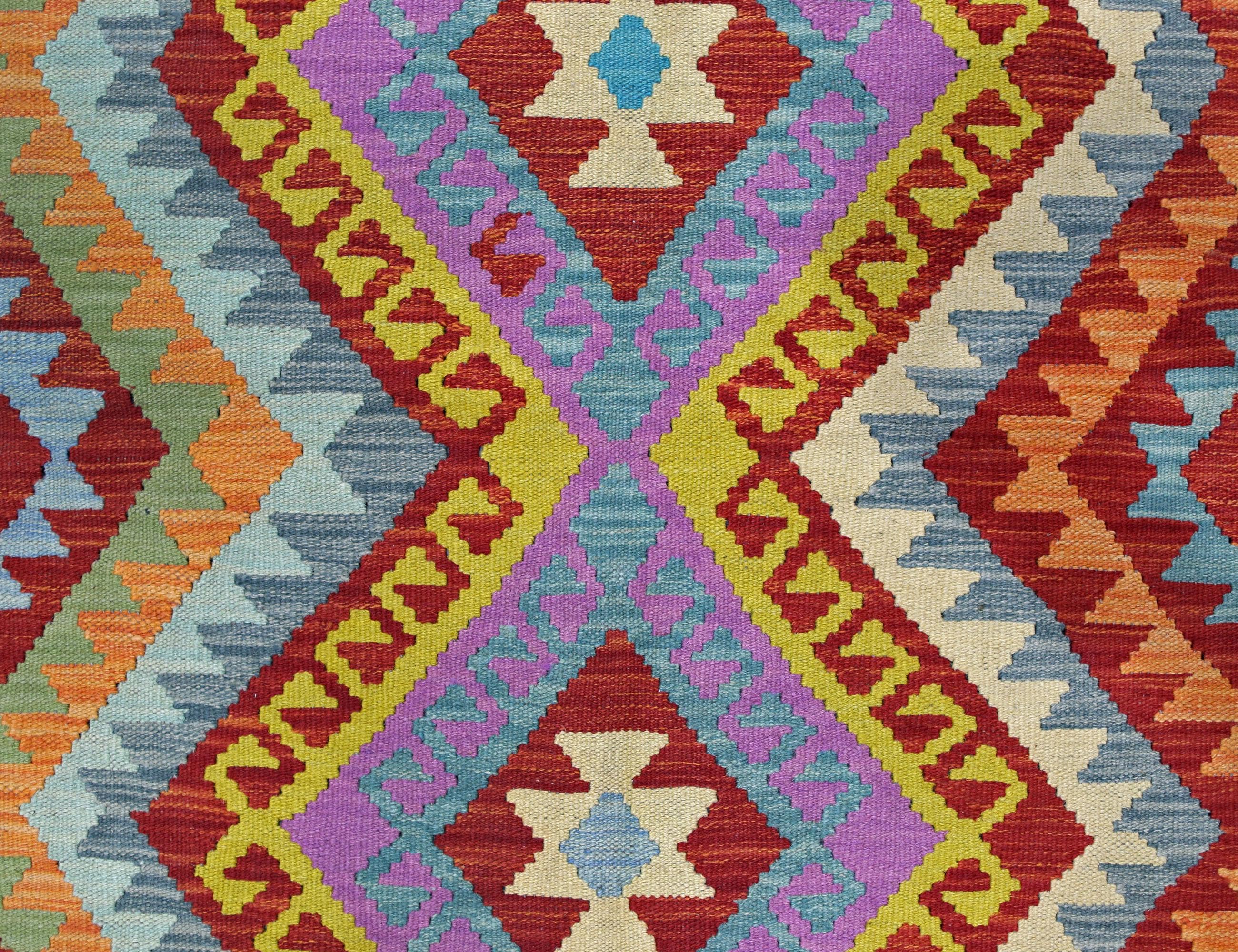

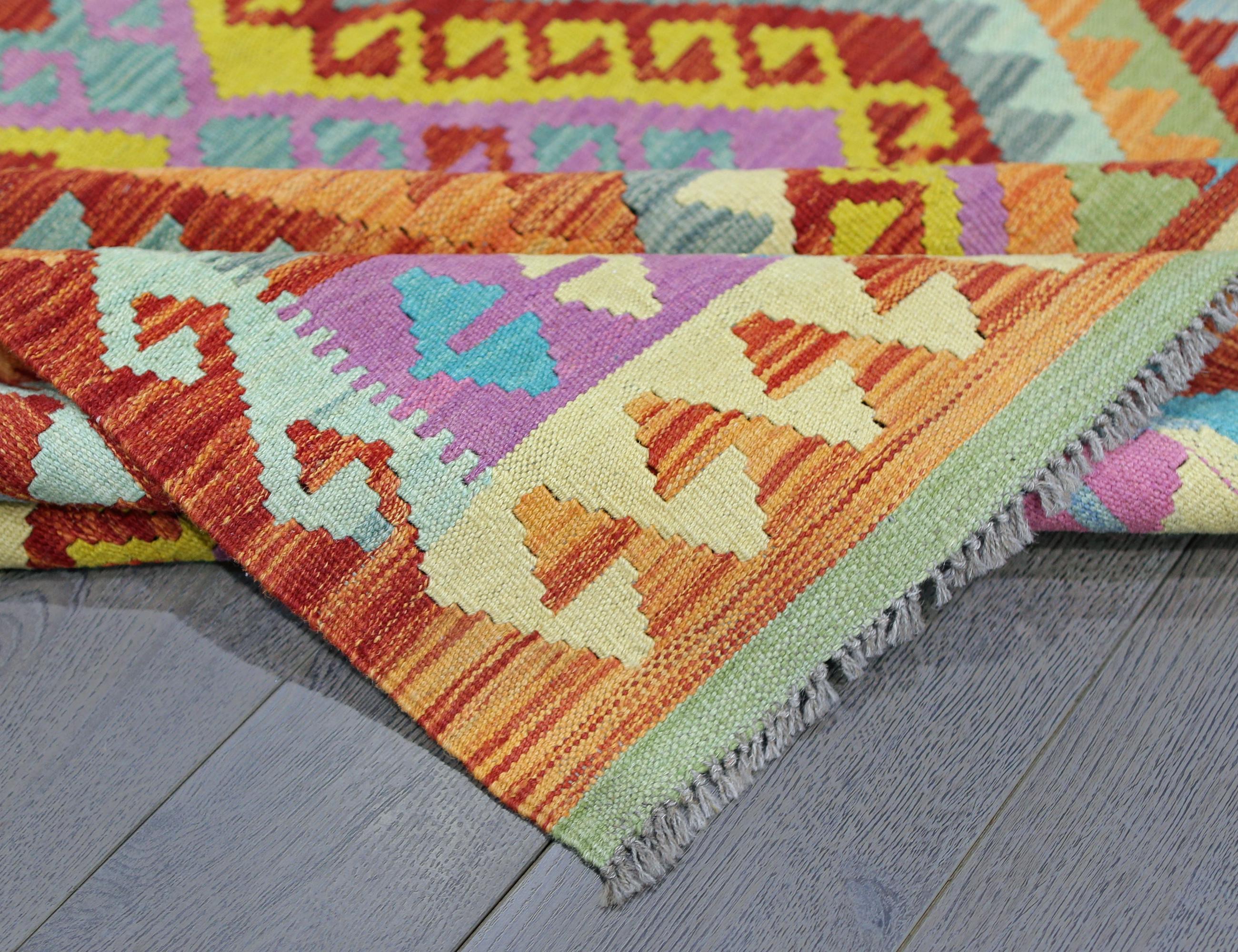

Colorful Wool Kilim Rug: Hand-Woven Tribal Flat-Weave (6'6" × 4'10")
$356.00 $890.00
Bring joyful color and true artisan craft into your space. This reversible wool kilim centers a dramatic zigzag “lightning” spine flanked by ashik diamond medallions, all framed by a playful border of hooked “ram’s-horn” and butterfly devices. The saturated brick red ground is animated with mint, teal, sky, lilac, saffron, coral, stone grey, and ivory—with beautiful abrash (natural tonal variation) that only hand dyeing creates.
Introduction
Woven on a horizontal loom in the Maimana/Andkhoy kilim tradition of northern Afghanistan and the adjoining NW Pakistan weaving belt, this piece shows textbook slit-tapestry construction: crisp, tooth-edged color joins; tight, even weft ribs; straight selvedges; and short original fringes. Light, durable, and easy to style—perfect for living and dining areas.
Expert Analysis & Authentication
1) Weaving tradition
True kilim/dhurrie (flat-weave), slit-tapestry technique.
2) Knot structure
Not applicable: kilims have no pile knots (neither Turkish/Ghiordes nor Senneh). Pattern is formed by interlaced colored wefts over warps.
3) Regional origin
Motif vocabulary (ashik diamonds, serrated zigzags, ram’s-horn hooks, small S devices) and finishing point to Maimana–Andkhoy tribal workshops across the Afghanistan–NW Pakistan belt.
4) Age period
Edges and fringes are unworn; colors are fresh; handle is even ⇒ contemporary (≈0–4 years).
5) Distinctive characteristics / marks
No signature cartouche; regional handwriting is evident in the zigzag “lightning” spine with inner meander/Greek-key guard, a layout frequently seen in modern Maimana workshop pieces.
6) Pile height & density
Flat-weave (no pile). From close-ups of the ribs: approx. 28–34 weft rows per 10 cm—a medium-fine grade that keeps geometry crisp.
7) Materials
Wefts (face): hand-spun wool in red, teal, mint, sky, lilac, saffron, coral, stone, ivory
Warps (foundation): cotton (visible greyish fringes)
Dyes: workshop dyes with controlled abrash; ivory likely undyed
Pattern & Cultural Analysis
8) Motifs present
Ashik/lozenge medallions with stepped infills (order, protection).
Zigzag “lightning” bands (energy/movement; a mountain/water symbol in folk readings).
Ram’s-horn hooks, latch-hooks, and small S devices (strength, prosperity, guardianship).
Butterfly/bow-tie units in the border panels (fertility/renewal motifs in regional vocabulary).
9) Naqsha (design theory)
A strong central axis of diamonds and zigzags organizes the field; nested meander guards echo the motion and keep the eye traveling. Color-blocked side panels act as visual counterweights.
10) Border–field relationship
The hooked/butterfly border repeats the field’s latch-hook language, “containing” the energy of the lightning spine and giving a confident architectural frame in red.
11) Regional signatures
Slit-weave teeth at every color join
Ashik diamonds stacked on a vertical axis
Reciprocal stepped triangles & S devices in the border
Meander inner guard worked in bright contrast
All hallmark traits of Maimana-style kilims.
12) Religious/ceremonial symbols
No explicit religious emblems; symbolism here is protective/auspicious from tribal folk tradition.
Features:
Type: Hand-woven kilim/dhurrie (slit-tapestry)
Tradition / Origin: Maimana–Andkhoy weaving belt (Afghanistan–NW Pakistan region)
Size: 197 × 147 cm (≈ 6'6" × 4'10")
Thickness: ~4–5 mm
Pile: None (reversible)
Foundation: Cotton warps
Face yarn: Wool wefts
KPSI: Not applicable for flat-weaves; density ≈ 28–34 weft rows / 10 cm
Age: Contemporary (0–4 yrs)
Condition: Excellent—no holes, stains, or repairs; straight edges; original fringes intact
Handle: Supple yet sturdy; lies flat with a pad
Striking zigzag lightning composition with ashik medallions
Reversible, breathable flat-weave ideal for dining rooms and high-traffic spaces
Hand-spun wool on cotton for durability and crisp geometry
Rich, room-brightening palette with artisan abrash (not printed)
Lightweight; easy to move, shake out, and layer
Care Instructions
Use a rug pad to prevent slip and extend life.
Vacuum weekly on low suction (no beater bar); vacuum the back occasionally.
Rotate every 3–6 months for even wear and light exposure.
Spot clean promptly: blot (don’t rub) with cool water and a drop of wool-safe detergent.
Avoid soaking/steam; air in shade to refresh.
Deep cleaning only by a wool/kilim specialist.
A vibrant kilim with real tribal DNA—bold geometry, joyful color, and honest handwork. If you want a statement piece that’s durable enough for daily life and beautiful enough for a design magazine, this is it. Add to cart with confidence; authenticity and condition guaranteed, and I’m happy to answer specialist questions or share extra photos.
Shipping from Pakistan
Processing time
5-7 business days
Customs and import taxes
Buyers are responsible for any customs and import taxes that may apply. I'm not responsible for delays due to customs.
Payment Options
Returns & Exchanges
I don't accept returns, exchanges, or cancellations
But please contact me if you have any problems with your order.
